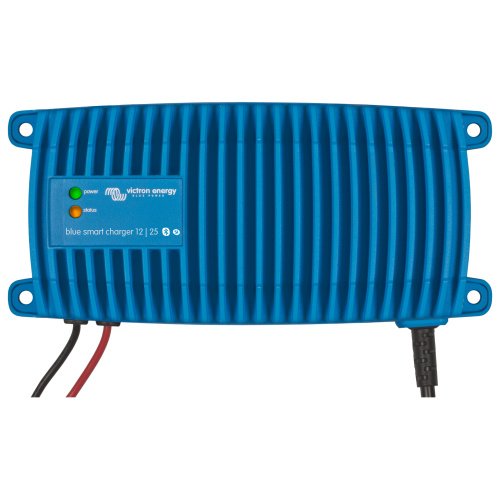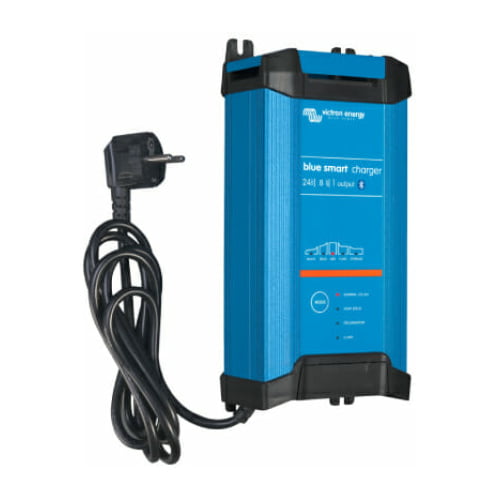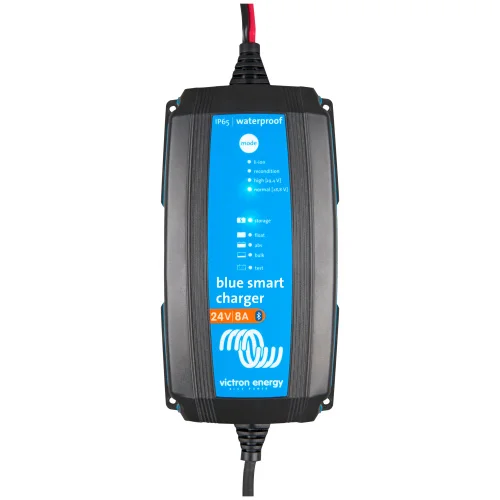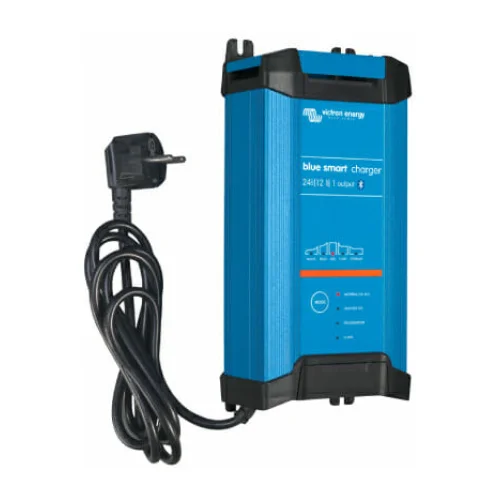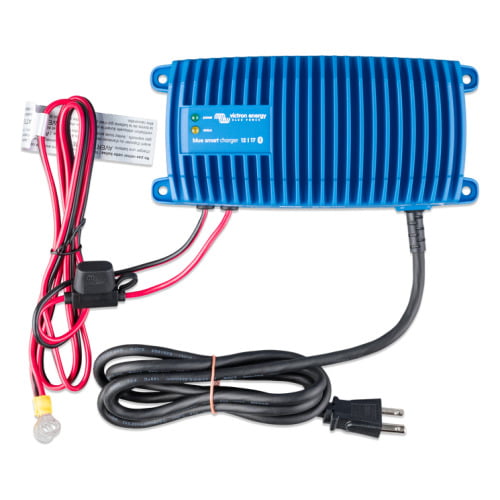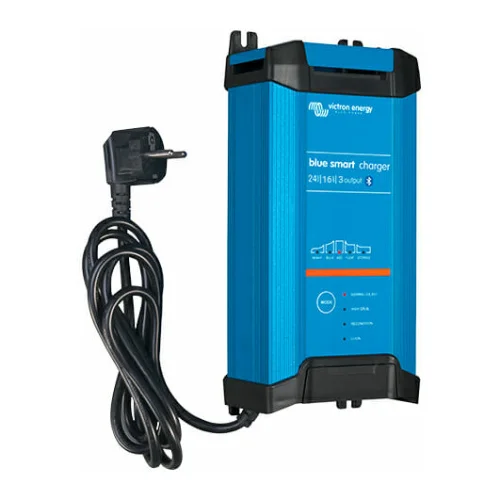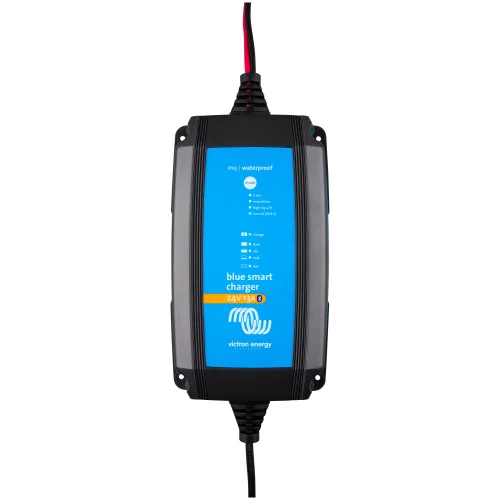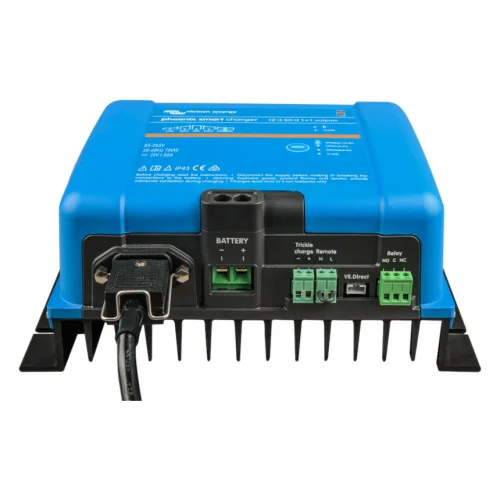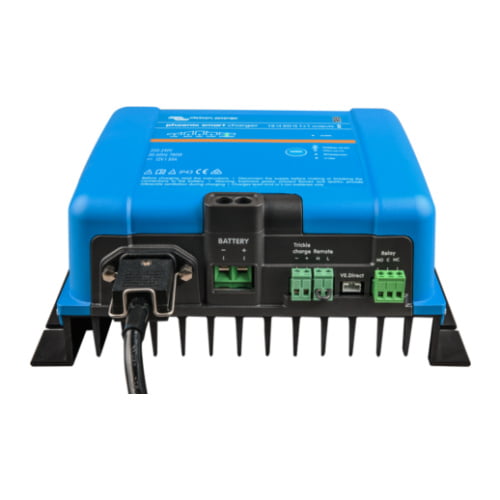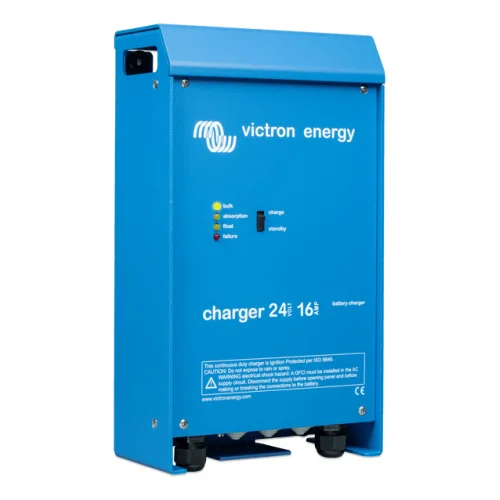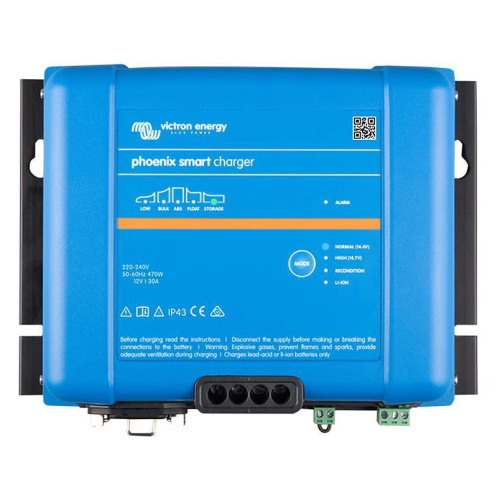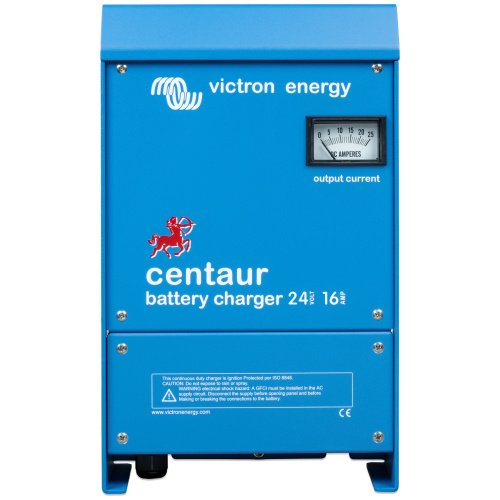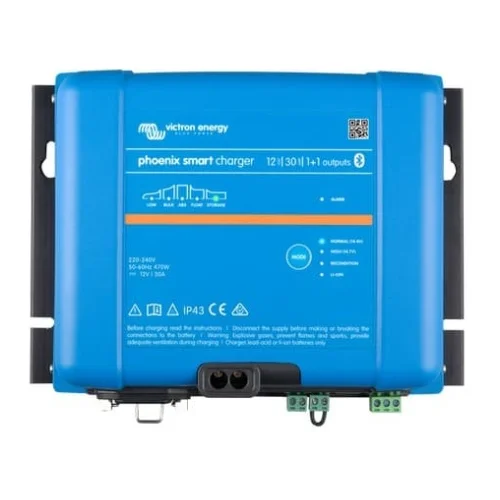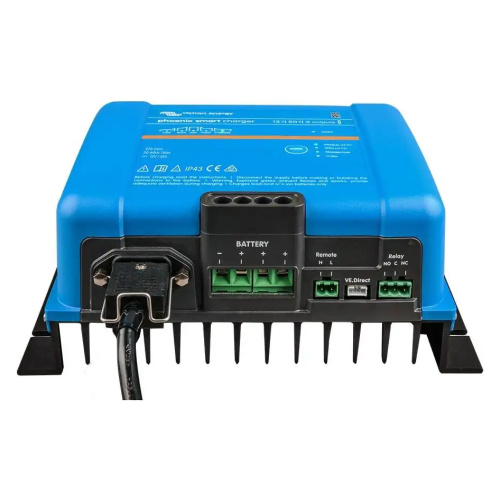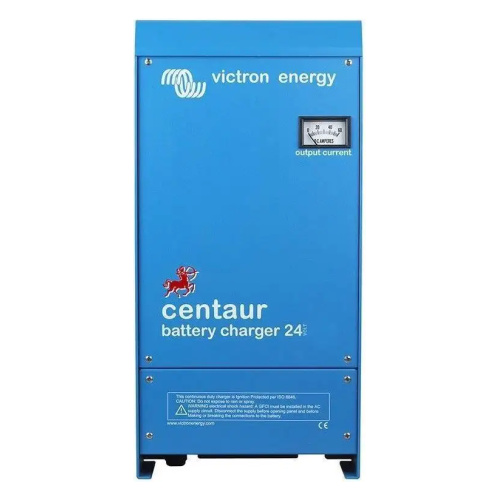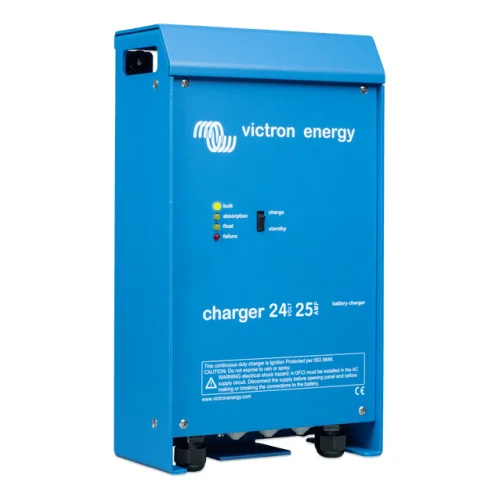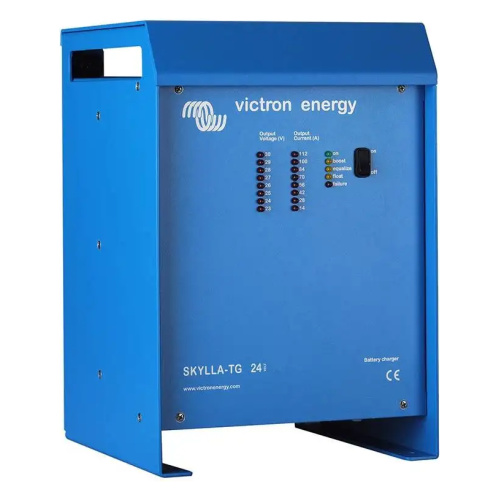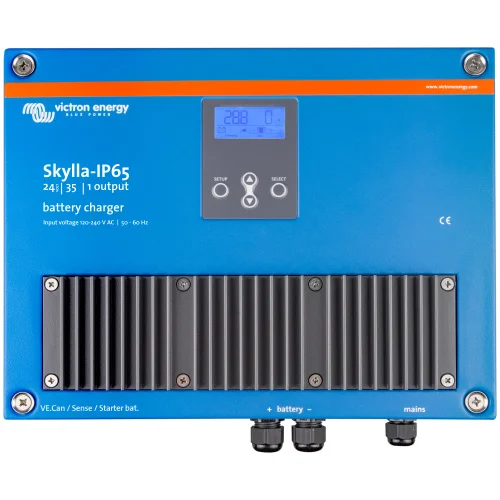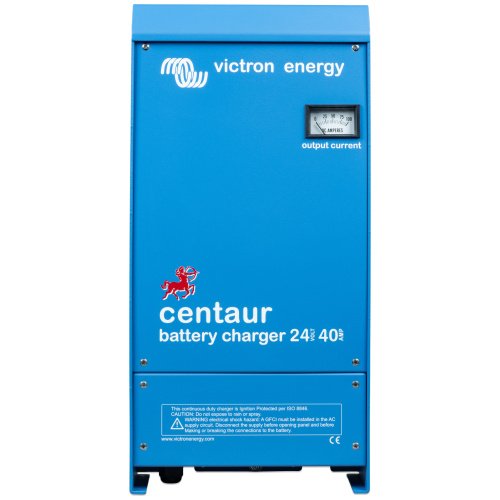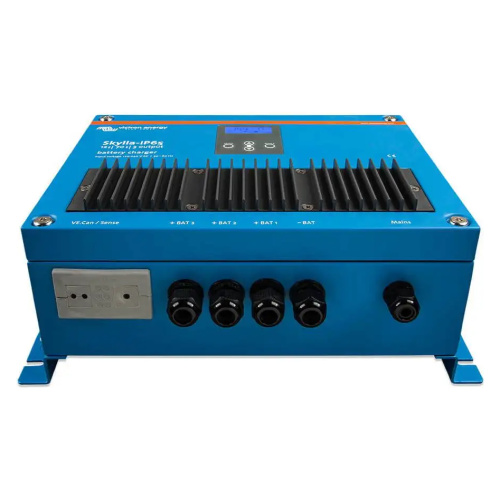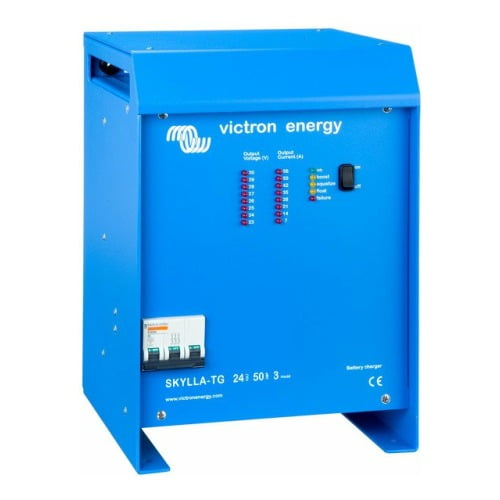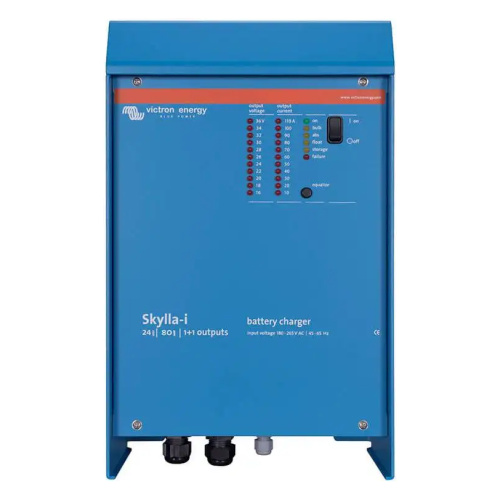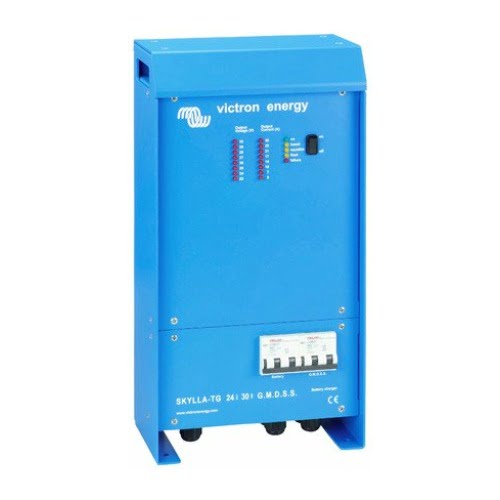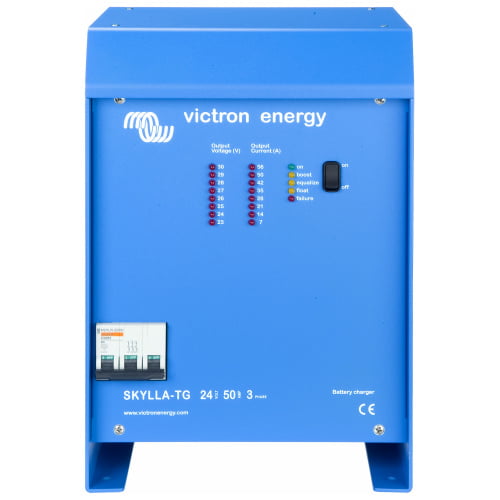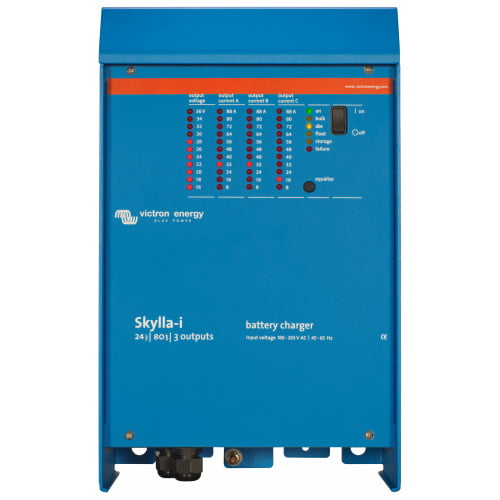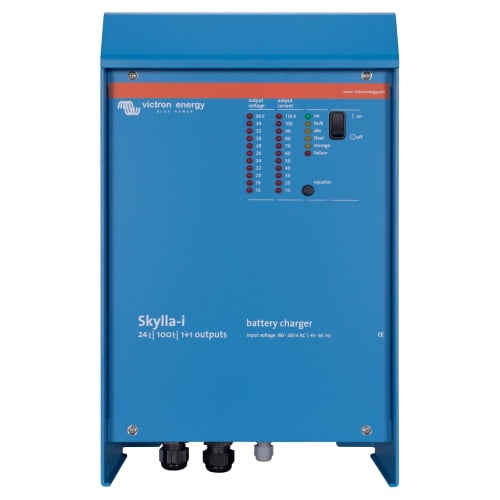- Free shipping to mainland Spain for orders over 300€.
Battery chargers 24V to 220V
24V battery chargers are the perfect solution for keeping your batteries always ready and in top condition, whether they are starter batteries, service batteries or part of a solar power installation. Whether you have a caravan, a boat or a back-up installation for your home, as long as you have a socket at hand, you can charge your batteries.
Take advantage of stops at caravan sites or port calls to charge the batteries of your caravan or boat.
Thanks to their advanced technology, Victron 24V battery chargers ensure fast, safe and efficient charging, extending battery life and avoiding unnecessary discharging.
At FVComponentes.com we have the full range of Victron 24V chargers to meet all needs: from compact models for use in campers and caravans where space is at a premium, to professional chargers with advanced protection and control features.
Features of Victron 24V battery chargers
- Full compatibility: Suitable for lead-acid, AGM, gel and lithium batteries.
- Intelligent protection: prevent overloads, short circuits and polarity errors.
- Maximum energy efficiency: optimise charging and extend battery life.
- Great versatility: ideal for automotive, marine, agricultural machinery and solar applications.
If you have a backup system for emergencies, a reliable charger is the key to never running out of power. The same goes for service batteries in caravans, campers and boats that don't start for weeks in the off-season: a good charger keeps the battery always ready.
How to choose the right 24 V battery charger?
When choosing a battery charger, there are several things to consider:
- Battery voltage: Check the voltage of the batteries to make sure which charger you need, 12V, 24V or 48V. This is the first thing you need to be clear about before looking for a charger.
- Battery capacity: this point is very important. As a quick rule of thumb: the charger should have a charging amperage between 10% and 20% of the battery capacity. For example, for a 100Ah battery, a 10A to 20A charger is perfect. Using a smaller charger means much longer charges and the risk of running short and not completing the charge cycles.
- Battery type: Not all chargers are suitable for all battery types. There are smart chargers that charge lead-acid, gel, AGM and lithium, but other models are designed to charge a specific type of battery. Check the charger's data sheet before purchasing.
- Where are you going to install it? Do you want it for a camper or boat? Better a compact, rugged and IP protected against dust and water. Stationary use in a workshop or home? Then you can choose a bigger and more powerful one. As always, space is of the essence.
How to use a battery charger?
- First read the manual of the charger to understand its technical specifications and how it fits into your installation.
- Make sure that the 24 V battery charger is compatible with the type and capacity of the battery.
- Prepare a well-ventilated, dry work area and disconnect the battery.
- Connect the equipment in this order: first the positive (+) cable and then the negative (-) cable.
- Make the settings according to the battery type and switch it on, monitoring the process to avoid problems.
- When charging is complete, turn off the device and disconnect the cables in reverse order.
- Finally, reinstall the battery if it was disconnected and store the 24 V battery charger in a safe place.
Where to buy 24V battery chargers?
In FVComponentes.com you will find the perfect 24V battery charger for your needs. As a reference online shop in Spain for Victron Energy, we have its complete catalogue with original equipment, official warranty and always at the best price.
Give your installation the power it needs and enjoy the peace of mind of having your battery always ready.
Frequently asked questions about 24 V battery chargers
Which 24V charger do I need according to the capacity (Ah) of my battery?
As a quick rule of thumb, the amperage of the charger should be between 10% and 20% of the Ah capacity of the bank.
Note: if your 24V bank is 2×12V in series, the Ah does not change (add voltage, not capacity).
Examples: 50Ah → 5-10A - 100Ah → 10-20A - 150Ah → 15-30A - 200Ah → 20-40A.
For maintenance, choose the low range; for faster recharging, choose the high range (always within the manufacturer's recommended range).
2) Is the same charger suitable for lead-acid, AGM, gel and lithium (LFP)?
Only if the 24V model is compatible with these chemistries and allows selection of the load profile.
- Flooded: Some chargers offer equalisation; use only when recommended by the manufacturer.
- AGM/Gel: do not equalise; follow specific absorption/float voltages.
- Lithium (LFP): BMS essential and respect voltages/temperatures; disable "repair"/equalisation if present.
3. How long does it take to charge a 24V battery?
Indicative time = (Ah × 1,2) ÷ A of the charger.
Example: A 24V 200Ah battery bank with a 20A charger would take about 12H to charge.
The factor 1.2 compensates for losses and absorption. If there are connected loads during charging, the charging time increases (even if the bank is 24V and has more power (Wh), the time depends on Ah and A).
4) Can I leave the 24V charger connected for weeks or months?
Yes, if it is intelligent and has charging phases: Bulk/Absorption/Float. Keeps the battery at a constant state of charge without overcharging.
Good practice: ventilated location, adequate wiring and fusing, temperature sensor if available, and regular condition checks of the bench.
5) What IP protection and security should I look for in 24V?
For indoor, campers and caravans, IP22 is usually sufficient. For outdoor, marine or wet and dusty environments, IP65/IP67 is better.
Contact with comercial@fvcomponentes.com if you have questions or need advice

